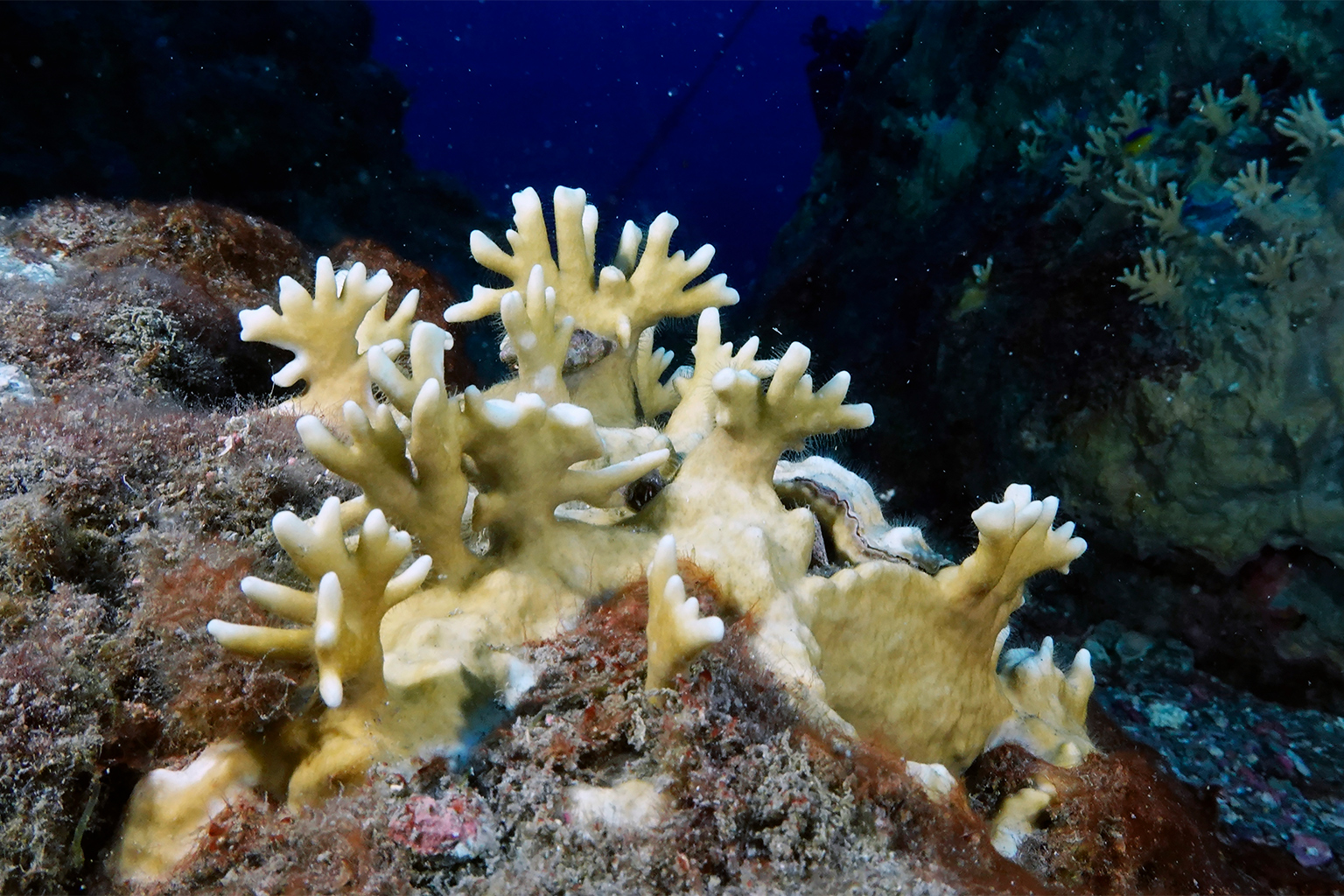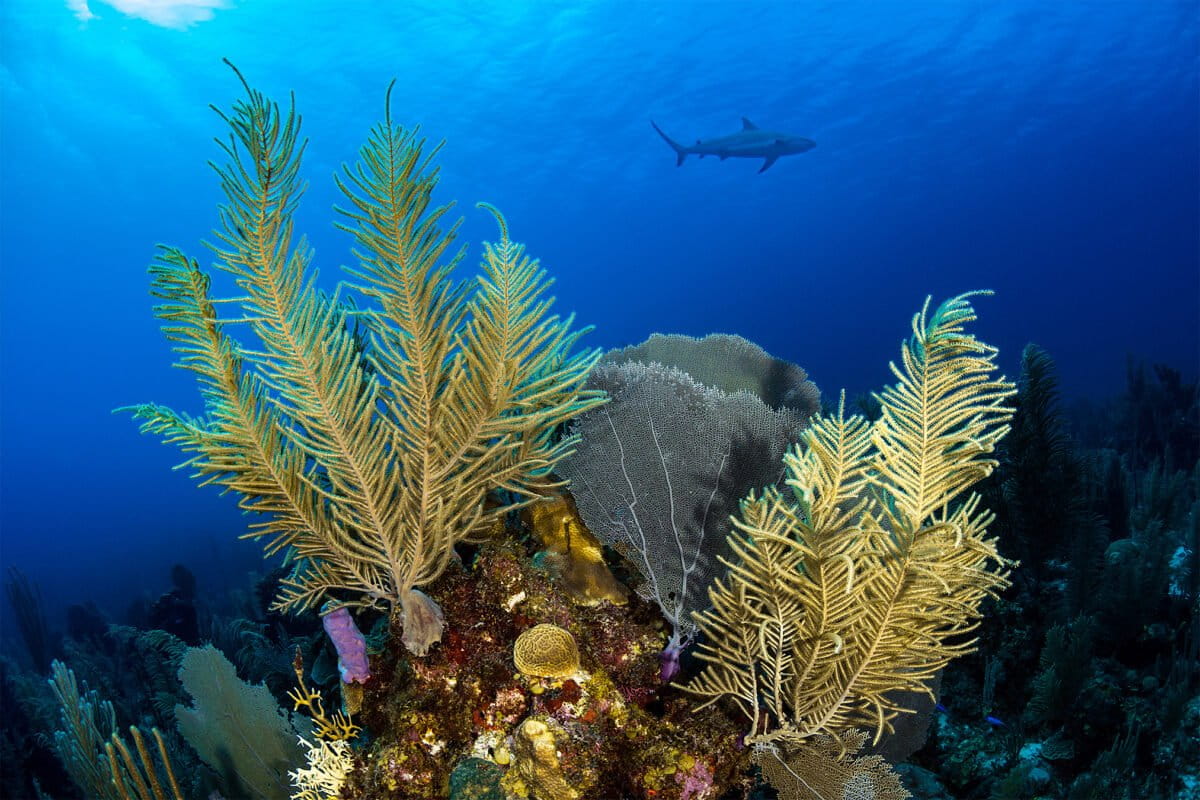- An initiative called the Super Reefs program is setting out to identify the corals in Belize’s waters that have the highest chance of surviving warming waters amid climate change.
- Researchers with the program have discovered that corals that grow in the hottest areas are naturally more heat-resistant.
- Massive starlet coral (Siderastrea siderea) tends to be tolerant of warm water, whereas symmetrical brain coral (Pseudodiploria strigosa) is more sensitive.
- The team plans to use its findings, which are to be published by 2026, to inform the Belize government which coral communities in the country are best suited for protection and restoration.
HOPKINS, Belize — Heaters, pumps and computerized meters rigged to an everyday picnic icebox may seem like a high school science project. But this heat stress tank may hold the key to finding the most heat-resilient corals in Belize’s waters.
As climate change and other human-caused stressors continue to push these rainforests of the sea closer toward collapse, finding and protecting coral with the highest chance of surviving in the world to come has become a key method to ensuring marine life and the ecosystem services they provide are preserved.
This is what the multinational collaborative effort known as the Super Reefs program hopes to help Belize achieve. The initiative is helmed by experts from the U.S.-based Woods Hole Oceanographic Institution (WHOI), Stanford University and The Nature Conservancy (TNC), along with officials from the Belize government and other Belizean stakeholders.
“Not all corals are born the same,” Anne Cohen, a tenured scientist at WHOI, who started the Super Reefs program in 2017, told Mongabay. In 2015, Cohen witnessed how extreme heat killed off 98% of the coral in the Pacific Remote Islands Marine National Monument, west of Hawai‘i.
“That’s just one example of the kinds of things that have been happening since the mid-1990s,” Cohen said. “So, we were in the Pacific, along with many other coral reef groups around the world, we were monitoring these events and the impact on the reefs, but I also noticed that there were some coral reefs and some parts of coral reefs that were not bleaching and dying during the heat wave.”
For Cohen, this was interesting and important. It became clear that research, time and resources had to be focused on understanding these special corals. Stakeholders could then build on those findings and incorporate them into management strategies for protecting and restoring coral reefs.
“Because there was not a whole lot that we could do to stop coral from dying because of the heat waves, and these reefs or areas of reefs where the coral community appeared more resistant were obvious signs of hope for the future,” Cohen said.
All corals can tolerate changes in water temperature to some degree — some more than others. And it’s this, something begun by nature, that the project seeks to take advantage of.
“Nature has already planted heat tolerance in certain corals, we have to exploit that — and not only protect those coral reefs, because they are going to be the reefs of the future, but also propagate them, and so accelerate nature’s own way of growing new reefs,” Cohen said.

Hunting for healthy reefs
To understand oceanic conditions that play a key role in the survival of reefs undergoing heat stress, the WHOI team developed meter-scale, three-dimensional, hydrodynamic models of reef temperature and flow to predict where these super reefs might be.
“We had to build these models so that we can see what the corals are seeing,” Cohen said. The hydrodynamic model helps researchers gather data on temperatures, currents and where the coral larvae are going.
“The model is a replica of Belize’s ocean conditions, and the conditions on the reef,” Cohen said. The models are compared with actual measurements for validation and adjusted as necessary.
After building the model, the researchers run multiple simulations that allow them to identify areas that are chronically hotter than others.
“The first clue that we use is that coral — the babies that are landing in naturally hotter areas and they are growing there and surviving, and they also survive a heat wave — those corals must be more heat-tolerant than the ones that are surviving the cooler areas,” Cohen said.
The program built a map showing the heat gradient profile across the Belize reef; this way, they can focus on areas that are always hotter than normal and even hotter during heat waves. The corals that live in those conditions are the ones that have to be heat-tolerant to survive, according to Cohen.
Devante Dawson, a postdoctoral researcher at Stanford, works with the Hopkins Marine Station in California and was the lead researcher and representative for the university in Belize for Super Reefs.
“The biggest takeaway from the research that was done in Belize was that we can kind of find heat-tolerant corals everywhere,” Dawson told Mongabay. “We found some in the South Water Marine Reserve, but we also found some in Turneffe Atoll.”
He said that with knowledge of these locations, Stanford’s role was to assemble cost-effective equipment, such as heat stress tanks, to test corals in those locations.
The base of the heat stress tank is made from a typical cooler, with a heater that simulates the heat stress a coral will experience on a regular day. Water pumps circulate the water to reduce the impact of expelled mucus from the coral on water quality, and a constant flow of water drips into the tanks. A computer is set up to simulate the pulses of heat that corals would experience throughout the day.
“We were trying to mimic the temperatures experienced and sort of spike it up quickly to elicit a response. The whole idea behind this experiment is that we want to get the corals to bleach to see which ones have the most heat resistance,” Dawson said.

Dawson said that since so many factors could play into what makes a coral heat-tolerant, the experiment doesn’t try to answer the question of why that is, but simply seeks to find the ones that are.
“There are a lot of different mechanisms being studied for heat tolerance but for this we are not answering why they are heat-tolerant; we’re really just like, let’s find the heat-tolerant ones — and in a two-[fold] way: one — be able to know, OK, this is an area where we have heat-tolerant coral so let’s protect it, but then not only protect it but use it for efforts of restoration as well,” Dawson said.
He said the University of Belize has heat test tanks and the expertise established by Stanford University to continue this work. He added Super Reefs has also benefited from the wisdom and experience of local residents.
“We had to start relying on the boat captains to show us where these locations of live coral were, and so a lot of this information we were able to use came from local knowledge,” Dawson said.
Heat-resistant coral
Massive starlet coral (Siderastrea siderea) is one species that has been found to be thermally resilient across all sites where the team worked, according to Nicole Craig, a reef resilience specialist at TNC. Craig is a Belizean who has worked in marine conservation for more than 10 years. For as long as she can remember, the sea has been her calling, she told Mongabay in an interview.
“There are some like Siderastrea siderea, no matter where you went, they were thermally tolerant and they really proved to be tough across all the sites that we worked at,” Craig said. “Whereas Pseudodiploria strigosa, which is the brain coral, that was a weaker one. That was the one that bleached the fastest. It didn’t even like the heat at all.”
In total, the researchers studied six sites and four species as part of the Super Reefs program in Belize. The coral species they looked at also included mustard hill coral (Porites astreoides) and mountainous star coral (Orbicella faveolata).
Coral communities in southern Belize were found to be particularly resilient over other locations.
The team plans to use its findings, which are to be published by 2026, to inform the government which coral communities are best suited for protection and restoration in Belize.
“If we see they are strong corals here, what is so special about this site that makes these corals thrive here, and if it means that corals are thriving here, where else in our environment looks like this?” Craig said. “If we find sites that are like this, maybe corals would thrive at the site too.”
Banner image: Sea fans in a coral reef in San Pedro, Belize. Image by Fabrice Dudenhofer / Ocean Image Bank.
Restoration, protection aim to save Belize’s coral reef from extreme heat and disease
Source link
#Belize #project #seeks #heatresilient #corals #protect #reefs
